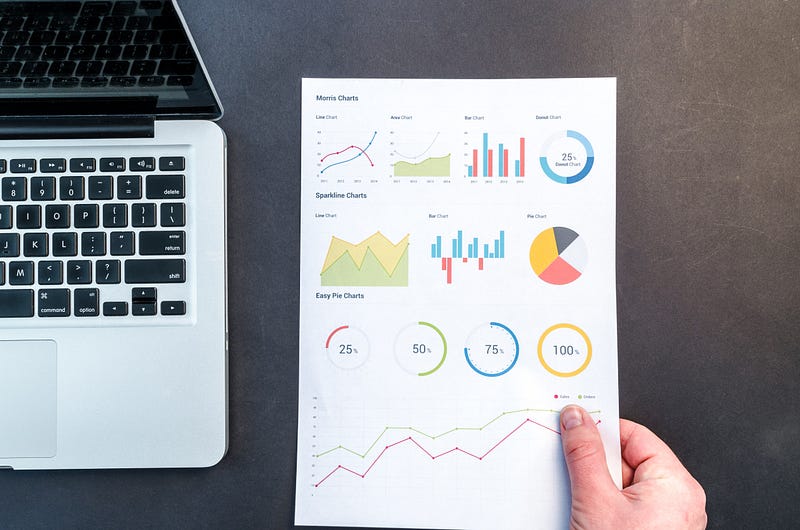Across all sectors and all industries, businesses have a single thing in common: the love of buzzwords. Whether you’re in Tech, Ops, Sales, Product, Marketing… you cannot escape the onslaught of new buzzwords each year. The data world is no different, with a range of colourful and confusing terms floating around. We’re here to break them down, to attack the lingo with plain English and explain just why and how these terms and technologies are important. Today we’ll cover four:

1. Big data
Let’s get this big one out the way with first. Big data is the term used for massive volumes of structured and unstructured data. Data so vast that it’s not stored in one database, but across hundreds, thousands even. Because of the size of the data, and also the velocity and variety of it, it’s often difficult to process using traditional database and software techniques. To meet the challenge, new forms of processing are popping up more and more, to exploit the riches of bringing huge datasets together and drawing insights from them.
Big data is really a sign of the changing times, where data is generated faster and more frequently every day:
- Most data collected now is unstructured and requires different storage and processing than that found in traditional relational databases.
- Available computational power is sky-rocketing, meaning there are more opportunities to process big data.
- The Internet has democratized data, steadily increasing the data available while also producing more and more raw data.
An example of ‘big data’ (and there’s many) would be medical data. Imagine for a minute the hoards of data a single hospital department could hold on its patients and staff members. When you start to look beyond that single department, to the entire hospital, or the entire trust, maybe even the entire NHS — you can begin to see both the challenges and opportunities available. Big data and it’s processing and analysis is something that you’ll hear more and more of. As a world that’s increasingly flooded with information, creating new ways to process, analyse and measure it will be inevitable.

2. Data analytics
Most working professionals will have had some joy (and suffering) at the hands of data analytics. Put simply, it’s the act of taking unstructured data, cleaning it, aggregating it and then trying to make sense of it. Data could include numbers, descriptions, images, sounds. For most businesses, the data up for analysis will be user-tracking data on apps and websites, email conversion rates, advertising click-throughs or perhaps CRM data.
Data analysis often involves looking for commonalities, like averages, ratios and percentages. The goal is to find patterns and relationships between variables that we can then make assumptions from. We can test these assumptions and if they’re proved valid, we can use future data to make more assumptions.
Data analytics is descriptive because it’s all based on past events. What it doesn’t involve is predicting the impact of a change in a variable.

3. Predictive analytics
Predictive analytics is about using data to predict what will happen in the future. This relies on human interaction with historical data to query data, validate patterns, create and then test assumptions.
The essence of predictive analytics is that past events will occur again if the same (or similar) variables are in place. And it’s super useful for businesses. It can help predict campaign effectiveness, highlight future business costs, even help inform the most effective product and pricing strategies.
The downside is that assumptions made with the data are only informed by a human understanding of the past, and predictive capability is limited by the volume, time and cost constraints of human data analysis.

4. AI / Machine Learning
The buzzwords of all buzzwords today. AI and machine learning are floated around everywhere — often interchangeably — so why are they so popular?
Put simply, machine learning is the job of making assumptions, testing those assumptions and learning as you go — given to a computer.
AI is a combination of technologies, and machine learning is one of the most prominent for businesses that want to save time (and eventually money) with data analysis and predictions. Because AI machine learning makes assumptions, reassesses models and reevaluates data without human intervention — this changes everything.
Just as AI means that a programmer doesn’t need to code for each and every possible action/reaction, AI machine learning is able to test and retest data to predict every possible future scenario at a speed and capability no human can attain. Because of this lift on time and resource restrictions, machine learning can compare and contrast multiple variables simultaneously to get more accurate, more granular reports and predictions. And with every dataset analysed and reported on, the more the machine learns and the greater the insights become.
Next issue we’ll dig into more lingo, covering technologies like blockchain, natural language processing and deep learning. At Data³ we work with all of these technologies — to find out more about what we can do for your business, check out www.data-cubed.co.uk and drop us a line!